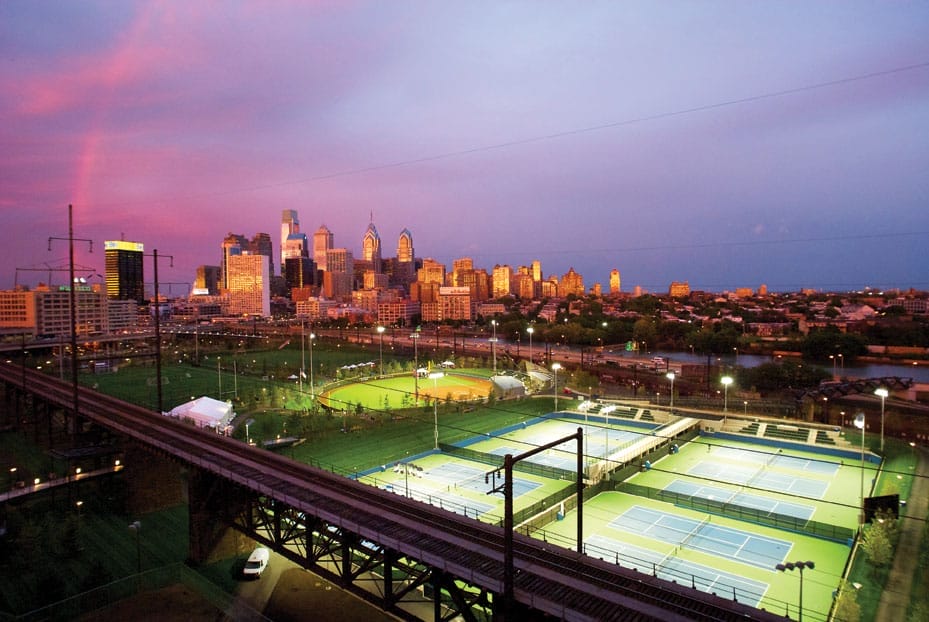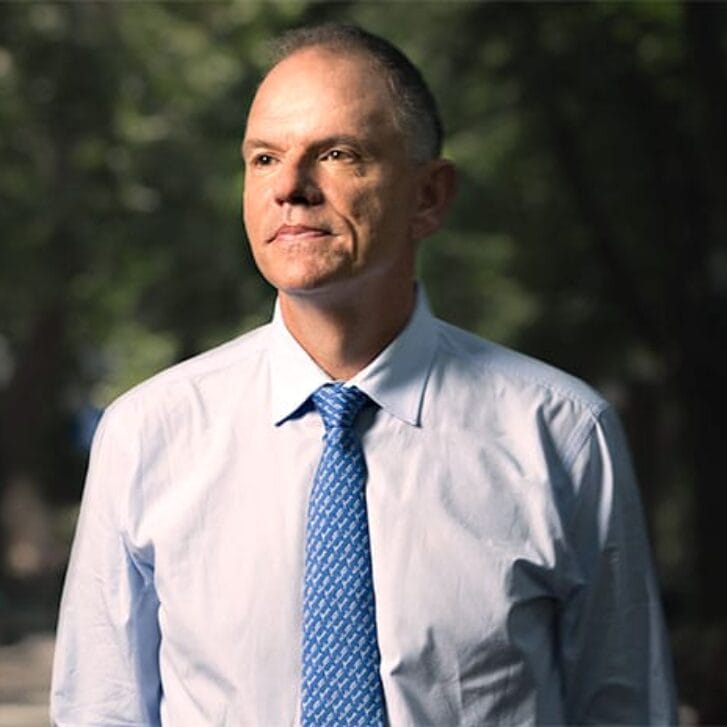What was green once will be green again. Penn Park (pictured here and on the cover at the ribbon-cutting on Sept. 15, 2011) stretches from Walnut Street to South Street along the Schuylkill River. It features 24 acres of recreational and athletic fields, including 12 tennis courts and a 470-seat multipurpose stadium. Construction took 22 months and was the culmination of a $46.5 million investment of institutional and donated resources, as well as years of planning.
The linchpin of the project was connecting the Park to Center City via the Walnut Street Bridge. To accomplish this, Penn pulled off a deft real estate maneuver. It bought the old USPS complex for a reported $50 million for the necessary land, then immediately sold off the postal service building and leased an annex facility to Brandywine Realty. In other words, Penn only kept the part of the property it needed.
Penn Park represents one piece in a greater vision for the University and Philadelphia. Penn Praxis, the clinical consulting practice in the School of Design, has called for 500 acres of new public green space throughout the city, citing financial, fiscal, environmental and health benefits, with the backing of the Department of Parks and Recreation and Mayor Michael Nutter, W’79. Penn Park is but one completed component.
Much of the economic rationale behind this new green-space initiative is derived from research by Susan Wachter, the Richard B. Worley Professor of Financial Management. Applying rigorous quantitative analysis and the power of the Wharton GIS Lab, of which she is director, Wachter has proven that green spaces increase the value of nearby properties.


























